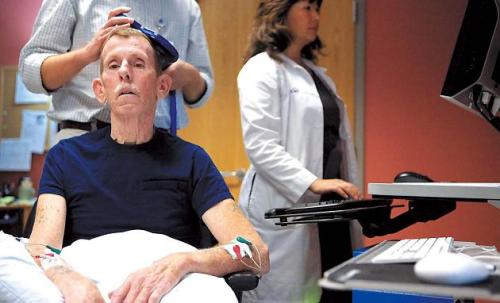Strokes remain one of the biggest causes of death in Korea, and signs of onset are vague
As Korea continues to become an aging society, more attention should be placed on the possibility of and risk factors leading to strokes, since they are more common among the elderly.
According to the Ministry of Health and Welfare, cerebral diseases were the No. 2 cause of death among Koreans in 2008, with 73.6 deaths per 100,000 people. Among cerebral diseases, strokes are the single largest cause of death, health authorities said.
However, the signs a stroke is happening are vague. Dr. Kim Yong-jae from Ewha Womans University Medical Center suggested three measures that can be taken against strokes.
Get rid of the risks.
A stroke is a condition where a blood clot, ruptured artery or blood vessel interrupts the blood flow to an area of the brain. A lack of oxygen and glucose (sugar) flowing to the brain leads to the death of brain cells and brain damage, often resulting in impairments in speech, movement and memory.
As Korea continues to become an aging society, more attention should be placed on the possibility of and risk factors leading to strokes, since they are more common among the elderly.
According to the Ministry of Health and Welfare, cerebral diseases were the No. 2 cause of death among Koreans in 2008, with 73.6 deaths per 100,000 people. Among cerebral diseases, strokes are the single largest cause of death, health authorities said.
However, the signs a stroke is happening are vague. Dr. Kim Yong-jae from Ewha Womans University Medical Center suggested three measures that can be taken against strokes.
Get rid of the risks.
A stroke is a condition where a blood clot, ruptured artery or blood vessel interrupts the blood flow to an area of the brain. A lack of oxygen and glucose (sugar) flowing to the brain leads to the death of brain cells and brain damage, often resulting in impairments in speech, movement and memory.

Controlling risk factors ― such as hyperlipidemia, a build up of fatty substances in the blood, hypertension or high blood pressure, and smoking ― is the most important thing when preventing a stroke.
In order to reduce these risks, always keep your body warm, avoid eating too much spicy, fatty and salty food, don’t smoke and exercise regularly.
“Once one has a stroke, the chances of a recurrence are higher than in those who haven’t had one. Therefore, prevention is the best measure,” Kim said.
Primary care
Sudden paralysis of one side of the body, trouble with speaking and walking, dizziness and a severe headache are often signs of an impending stroke. These symptoms usually subside within 20-30 minutes, but about 20 percent of stroke victims will face a relapse within a year Kim said.
It is extremely important to take swift measures within three hours of a stroke. During this “golden time” everything possible should be done to save the person’s life, so be sure to go to a doctor, Kim said.
“People around those who have cerebral diseases should learn about the nearest medical centers in order to be ready for any possible mishaps,” Kim said.
Prevent relapse
Kim explains that the scariest part of a stroke is the possibility of reoccurrence.
“One out of every four people who have collapsed from a stroke are likely to collapse again within five years. The first 30 days after treatment are even riskier,” Kim said.
A strict diet regime ― refraining from eating salty, fatty or spicy foods ― and taking medication are the surest ways to prevent a relapse. Lessening stress through meditation and increasing brain activity through sports such as golf and tennis will help, too, Kim said.
By Bae Ji-sook (baejisook@heraldcorp.com)
-
Articles by Korea Herald






![[Weekender] How DDP emerged as an icon of Seoul](http://res.heraldm.com/phpwas/restmb_idxmake.php?idx=644&simg=/content/image/2024/04/25/20240425050915_0.jpg&u=)



![[Music in drama] An ode to childhood trauma](http://res.heraldm.com/phpwas/restmb_idxmake.php?idx=644&simg=/content/image/2024/04/25/20240425050929_0.jpg&u=)








![[Herald Interview] Mistakes turn into blessings in street performance, director says](http://res.heraldm.com/phpwas/restmb_idxmake.php?idx=652&simg=/content/image/2024/04/28/20240428050150_0.jpg&u=20240428174656)
